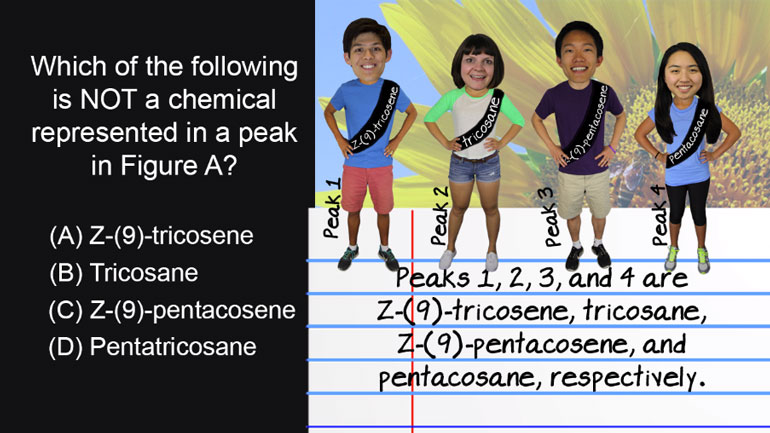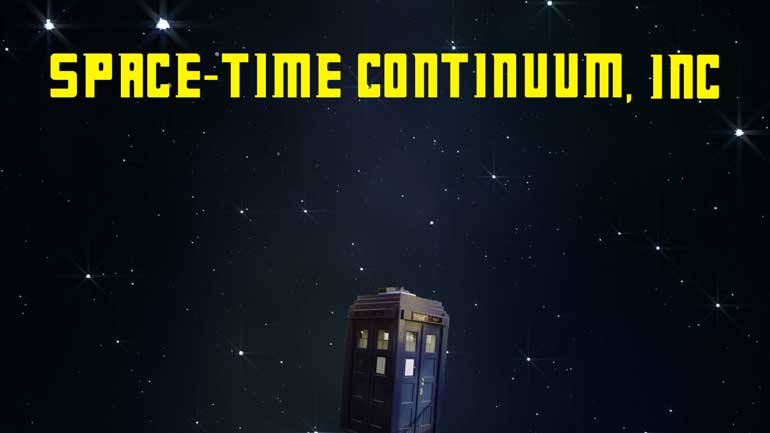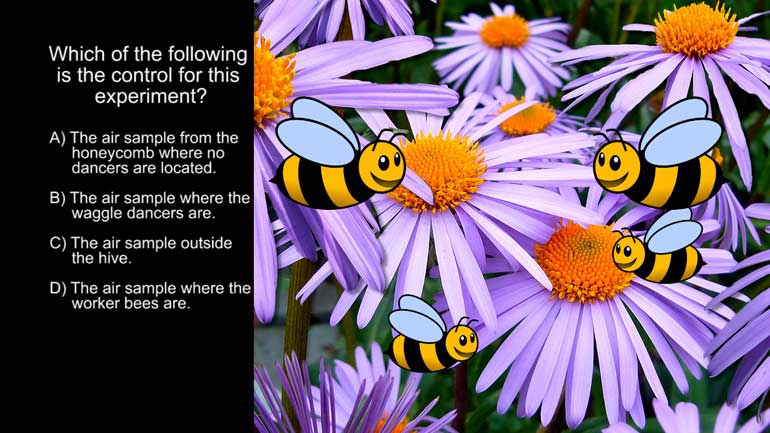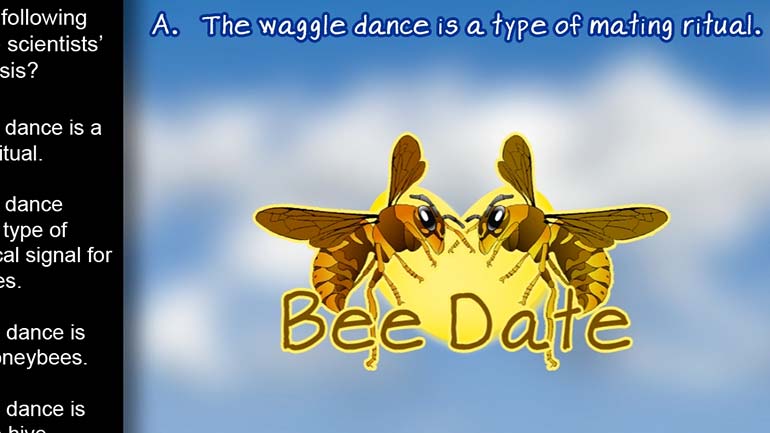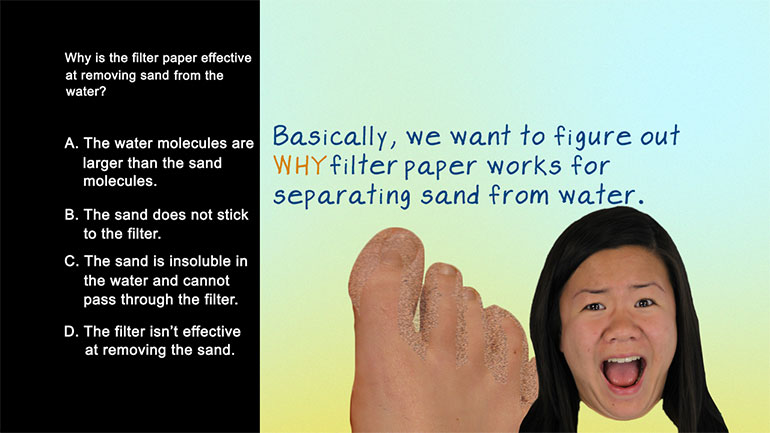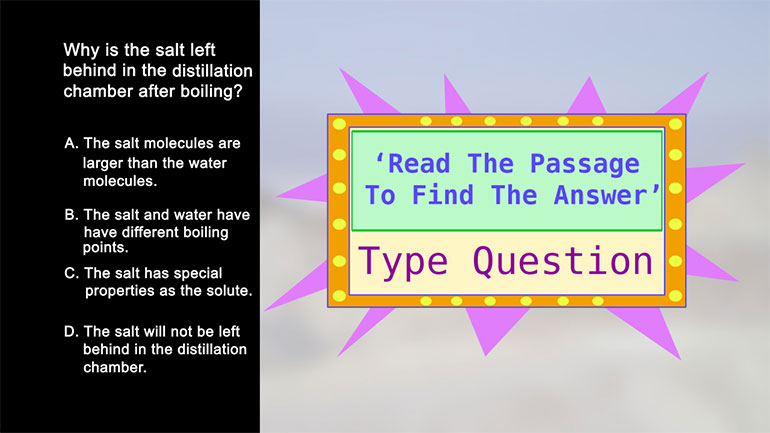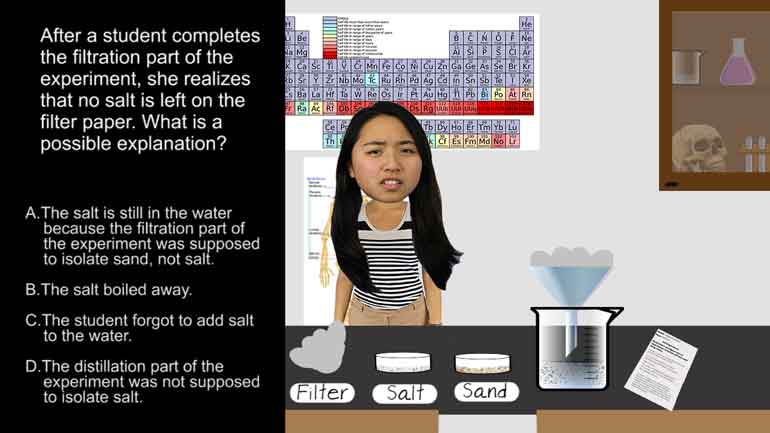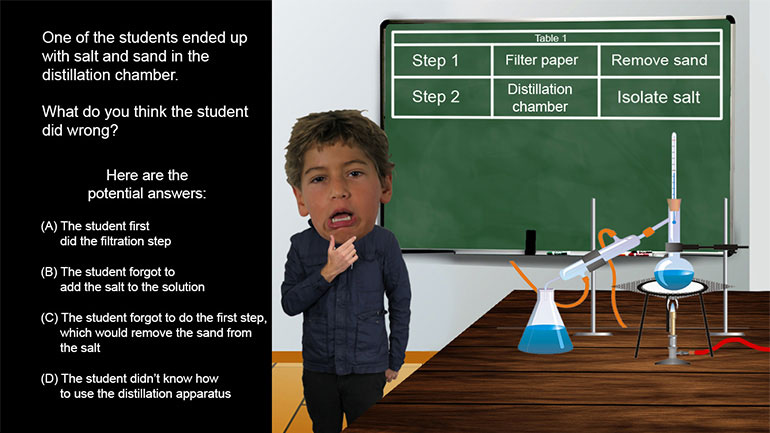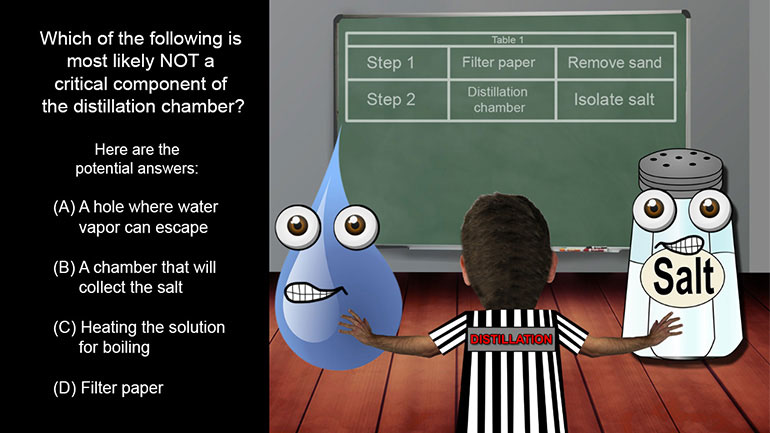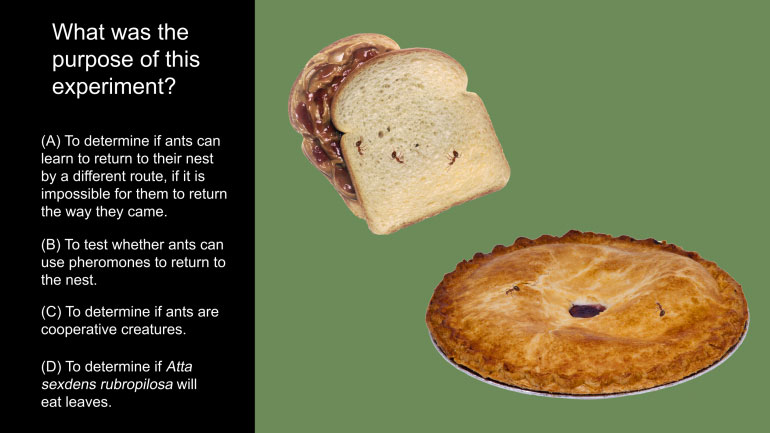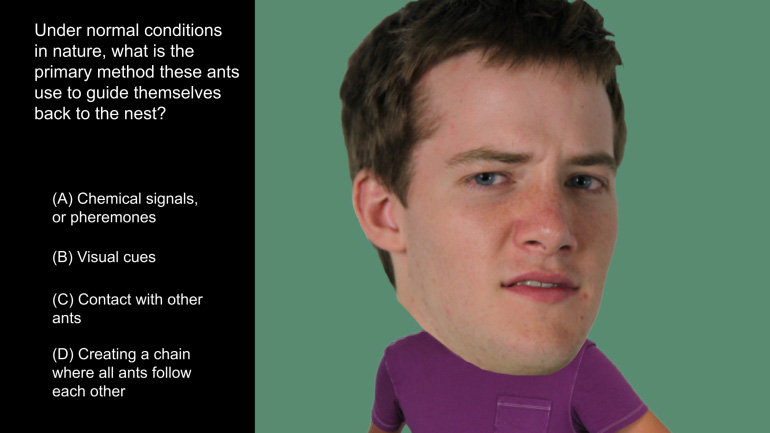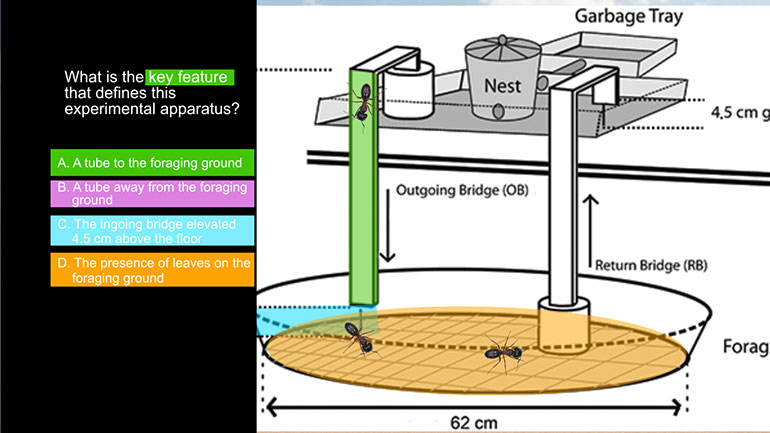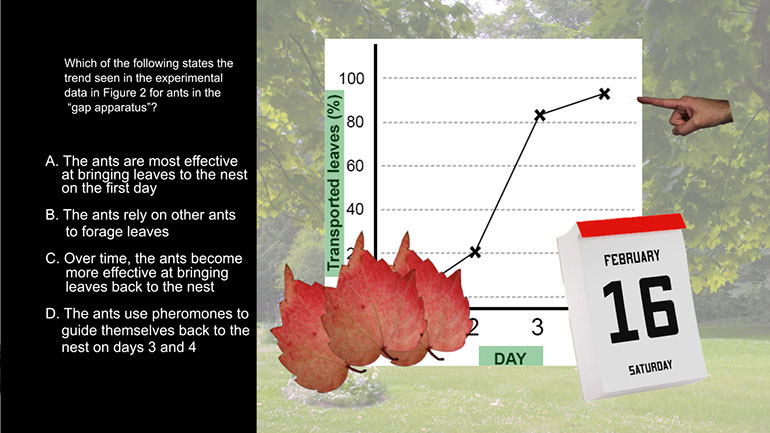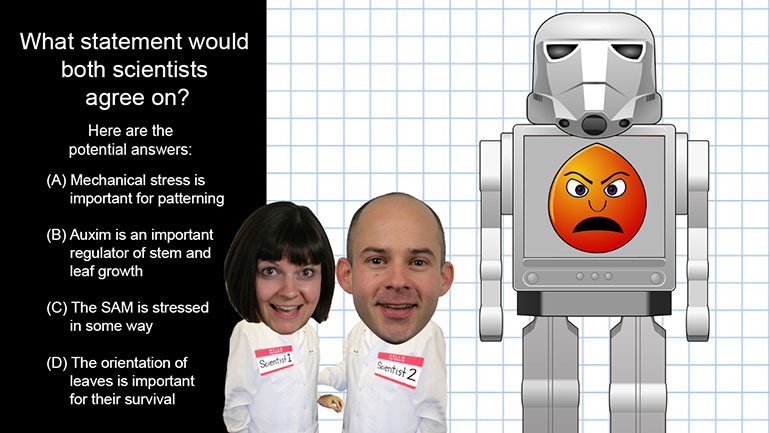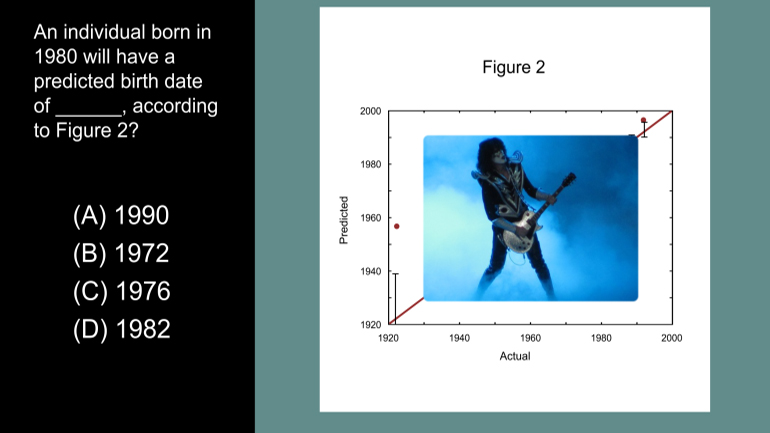ShmoopTube
Where Monty Python meets your 10th grade teacher.
Search Thousands of Shmoop Videos
Playlist ACT® Science Research Summary Passage 26 videos
ACT Science: Research Summary Passage Drill 1, Problem 1. What is the method used by the scientists in this experiment?
ACT Science: Research Summary Passage Drill 1, Problem 2. Which of the following is not a chemical represented in a peak in Figure A?
ACT Science: Research Summary Passage Drill 1, Problem 3. What is the time course of the experiment?
ACT Science 3.3 Research Summary Passage 189 Views
Share It!
Description:
ACT Science: Research Summary Passage Drill 3, Problem. What is the key feature that defines this experimental apparatus?
Transcript
- 00:04
Shmoop... there it is...
- 00:07
If you haven't yet used brain osmosis to commit this passage to memory,
- 00:11
hit pause and give it a look...
- 00:25
What is the key feature that defines this experimental apparatus?
- 00:29
And here are your potential answers...
Full Transcript
- 00:32
So... what is this question asking?
- 00:34
What in the world is an "experimental apparatus?"
- 00:38
The first sentence of the experiment states that the scientists developed the experimental
- 00:42
apparatus depicted in Figure 1.
- 00:44
So, using our fabulous deducing skills...
- 00:47
the apparatus is probably the set-up for the experiment.
- 00:50
Here's an even more precise definition: the apparatus is the way the experiment is set
- 00:55
up so that it can serve a particular purpose.
- 00:59
So...for example, this apparatus does not include a ball of cotton candy stuck to the
- 01:03
end of the tube because it wouldn't serve a purpose in the experiment.
- 01:07
The ants would no doubt enjoy the addition.
- 01:10
Anyway, the question is asking us to identify the key feature...the most important part
- 01:15
of the set-up that helps the scientists find what they're looking for.
- 01:19
According to the passage, the scientists wanted to see whether or not the ants could return
- 01:23
to their nest on a different path.
- 01:26
What part of the apparatus makes sure that the ants are using a different
- 01:30
path on the journey home?
- 01:31
Well, options A and B are indicating the actual tubes that the ants are crawling on.
- 01:36
But...the feature that's stopping the ants from using the SAME tube is the fact that
- 01:41
the ingoing bridge is elevated 4.5 cm off the ground.
- 01:45
The poor ants can't reach the tube that they came from,
- 01:48
so they're forced to go home via a different route.
- 01:51
The scientists have successfully designed the apparatus to satisfy their purpose.
- 01:56
And we've figured out our answer to the problem... it has to be option C.
Related Videos
ACT Science: Research Summary Passage Drill 2, Problem 1. Why do you think that the filter paper will not remove the salt from the water?
ACT Science: Conflicting Viewpoint Passage Drill 1, Problem 1. What statement would both scientists agree upon?
ACT Science Data Representation Passage: Drill 3, Problem 5. According to Figure 2, what birth date will be predicted for an individual actual...
ACT Science: Data Representation Passage Drill 1, Problem 2. Which of the following is a variable in Figure 1, but not in Figure 2?
ACT Science: Data Representation Passage Drill 1, Problem 1. What do the statistics in Figure 1 suggest?

